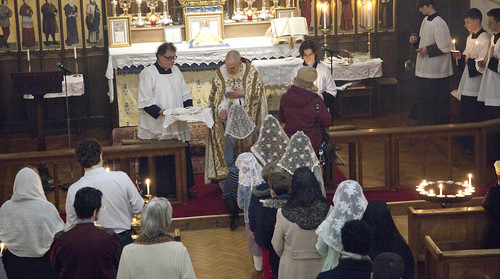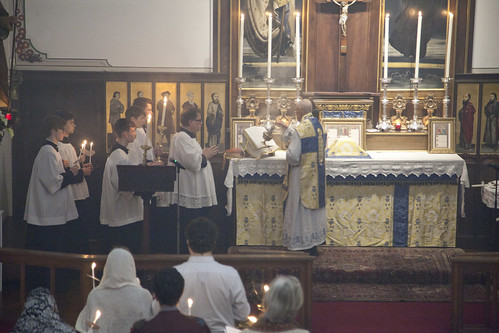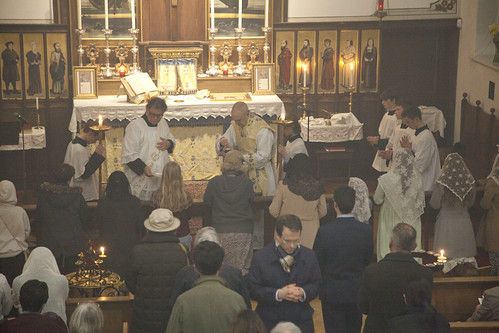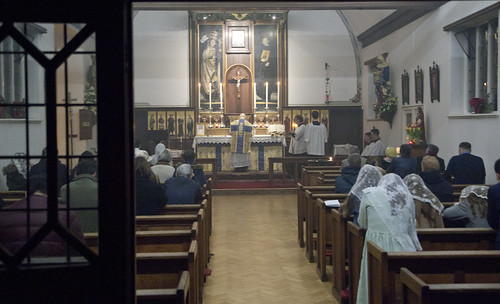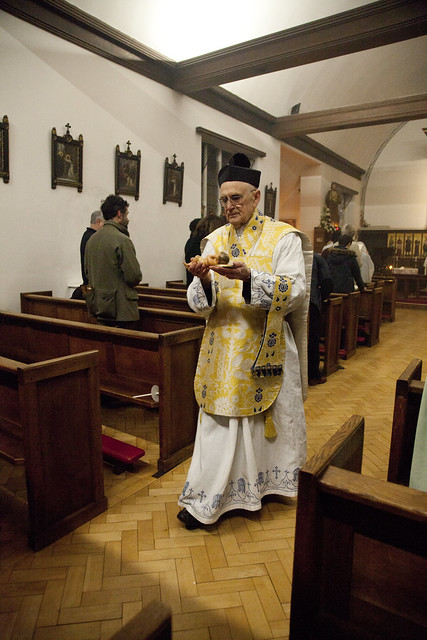Chairman's Blog
The Rescript: back to the Catacombs?
What does the Rescript mean for Catholics attached to the Traditional Mass around the world? Our press release on the subject can be found here. Here I shall expand on the question of ongoing provision for the 1962 Mass, which is going to depend on a number of things.
Before I say anything else, I should stress that existing arrangements and permissions continue to be valid until explicitly revoked by the bishop, whether he is acting spontaneously or passing on the judgement of the Dicastery for Divine Worship. Given the enormous number of cases the Dicastery will be asked to consider, and the ‘utmost care’ the Dicastery demands from bishops in preparing their requests for permission (see the Responsa ad dubia), this is going to take a very long time to implement. Since we seem to be getting new documents about the Traditional Mass every few months, it would be a brave man who would say that the law will be the same as it is now when a decision comes through in this or that case.
Nevertheless, the Rescript will make no difference at all in some places: places where the TLM is already celebrated in a place of worship which is not a ‘parish church’. I myself regularly attend the Traditional Mass in one such place, a secondary church (“chapel of ease”), even though the Mass is celebrated by the parish priest. Most—though not all—of the locations used by the Traditional Institutes are not parish churches: they may once have been, but they’ve lost their ‘geographical parish’ and been made shrines, for example. Then again, if you attend Mass in a monastery, convent, or seminary, or in a private chapel attached to an historic house, then it will make no difference: unless you find your congregation is swelled by refugees from elsewhere.
Then again, an easy way for a bishop, if he is one with pastoral concern for those of his people who attend the traditional Mass, to deal with the problem, will be to move a celebration from a parish church to another place of worship, if there is a suitable one nearby. The key issue here is the availability of such places. In Italian cities there often seems to be a church every hundred yards, and lots of them are not parish churches. In other places this is not so, and where they exist they tend to be small. It may sound trivial but where a congregation has to travel by car, the lack of a car park can make a church completely impractical for many people.
Then again, it is open to bishops to change the status of their churches. A parish church can cease to be a parish church. This may seem a complicated way of dealing with a legal problem, but actually churches frequently get reassigned from one legal status to another, most obviously when parishes are merged. Under the current Code of Canon Law, and in the context of current normal pastoral practice, it actually makes very little difference if a church is a ‘parish church’. A century ago you’d have run into difficulties getting married or your baby baptised in non-parish churches, but today these things happen all the time.
Another option a bishop has is to allow the public celebration of Mass in a location which is not a Catholic Church at all: a non-Catholic place of worship, a hired meeting room, a private home. Then again, permission from the bishop is not necessary if a Mass in a private house, say, is a ‘private’ Mass, which means in practice that it is not publicly advertised. Since the Dicastery for Divine Worship doesn’t want Traditional Masses to be advertised in parish newsletters anyway, it is a distinction which doesn’t make much of a difference. Attending a private Mass fulfils your Sunday obligation, if the celebration takes place between noon on Saturday and midnight on Sunday.
This is the kind of thing, I think, which is meant when people talk about the TLM going ‘underground’. This does not necessarily involve breaking the law of the Church. Before 2007, when things became much easier, a lot of Masses took place without being advertised, celebrated by priests who’d managed to get permission to celebrate the Old Mass, perhaps because of their age. At the same time there were of course Masses which were illicit, for one reason or another, notably the Masses of the SSPX.
The Latin Mass Society and other Una Voce groups were founded and continue to exist to make possible the public celebration of the ancient Mass in full accordance with the Church’s law and under the authority of the local bishop. Insofar as this becomes impossible, then the moral case for illicit celebrations becomes stronger. The people who advocate for ‘disobedience’ should be grateful to the Una Voce movement for making this case for them.
We are not going to stop seeking permissions, where these are needed, for public celebrations, in proper churches, under the bishop. Hole-in-a-wall celebrations may solve a local problem but they are not the way out of the present liturgical crisis. What the Church needs is for the Traditional Mass to be given a place of honour in the Church: not excluding anything, not imposed on anyone, but available as an enrichment of the liturgical lives of ordinary Catholics, and a public expression of the Church’s continuity with previous centuries.
That is our objective, and I hope is shared by many Catholic of good will with of all kinds of liturgical preferences. This need not be a battle or a war. It should just be a matter of meeting people’s spiritual needs in the best possible way.
Please pray for this intention—the liberty of the Traditional Mass—this Lent.
Support the Latin Mass Society
Lenten vestment-making challenge from the Guild of St Clare
From the Guild blog.
Una Voce International has today launched an Appeal for Lenten prayers and penances with the special intention of the liberty of the traditional Mass. Rumours have been circulating recently which suggest that further restrictions will be placed on the Traditional Mass this year, perhaps in Holy Week, and the Appeal is a response to this possible threat. The Guild of St Clare is joining the Appeal by offering our usual Lenten Vestment Mending Challenge for this intention.
The Appeal does not ask for a particular prayer to be said; rather, that individuals and groups should make their own particular offerings for the intention. We at the Guild of St Clare therefore invite anyone who may wish to join us in mending or making a particular vestment during Lent as our contribution to the Appeal, uniting the work with our special vestment-mending prayer: Jesu, via, veritas et vita, miserere nobis (Jesus, the way, the truth and the life, have mercy on us).
It is not necessary to be local to the Guild to participate in this endeavour. If you are unable to attend local Chapter meetings, or the mending workshops in London, it is nevertheless possible to take part from your own home. Any vestment or altar furnishing can be the object of your work, although in accordance with the ethos of the Guild of St Clare, it should be one which will be used, at least occasionally (not necessarily exclusively), for the Traditional Mass. Neither is it necessary to undertake a colossal project on a grand scale (although this isn't discouraged!). Simply sewing down loose braid, or replacing the tapes in a chasuble, can make a big difference to a priest living with the inconvenience of such a problem, and will be also be welcomed as a contribution to the Appeal.
If this suffering is indeed to come to us, it must be understood as an invitation to prayer: let us be like the widow praised by Our Lord for the donation of her mite to the Temple, and give as much as we can, be it ever so little, to support the Church and preserve the great treasure of her ancient liturgy.
If you would like to take part in this Lenten Challenge, please email me at guildofstclare@lms.org.uk for further details. If you are unable to participate but are interested in the project, we will be updating our blog and Twitter feed with news about how our Lenten work is progressing.
Video about 'The Liturgy, the Family, and the Crisis of Modernity'
Pray for the TLM this Lent
Appeal for prayers and penances
for the Liberty of the Traditional Mass in Lent
From Una Voce International and others
Una Voce International and other organisations, groups and individuals concerned with the Traditional Latin Mass would like to appeal to all Catholics of good will to offer prayers and penances during the season of Lent, particularly for the intention: the liberty of the Traditional Mass.
We do not know how credible rumours of further documents from the Holy See on this subject may be, but the rumours themselves point to a situation of doubt, conflict, and apprehension, which is severely harmful to the mission of the Church. We appeal to our Lord, through His Blessed Mother, to restore to all Catholics the right and opportunity to worship according to the Church’s own venerable liturgical traditions, in perfect unity with the Holy Father and the bishops of the whole Church.
Una Voce International (Foederatio Internationalis Una Voce, FIUV,) https://fiuv.org
Other language versions: French
Appel à la prière et à la pénitence durant le Temps du Carême pour la liberté de la messe traditionnelle.
La Fédération International Una Voce (FIUV) et d'autres organisations, groupes et individus concernés par la messe traditionnelle en latin lancent un appel à tous les catholiques de bonne volonté pour qu'ils offrent des prières et des pénitences pendant le Temps du Carême, à l'intention de la liberté de la messe traditionnelle.
Nous ne savons pas à quel point les rumeurs concernant d'autres documents du Saint-Siège à ce sujet peuvent être crédibles, mais les rumeurs elles-mêmes indiquent une situation de doute, de conflit et d'appréhension, qui nuit gravement à la mission de l'Église. Nous appelons Notre-Seigneur, par l'intermédiaire de sa Sainte Mère, à rendre à tous les catholiques le droit et la possibilité de pratiquer le culte selon les vénérables traditions liturgiques de l'Église, en parfaite unité avec le Saint-Père et les évêques de toute l'Église.
Fédération Internationale Una Voce (Fœderatio Internationalis Una Voce - FIUV) https://fiuv.org
Italian
Appello per preghiere e penitenze durante la Quaresima per la libertà della Messa tradizionale
Da parte di Una Voce Internazionale
Una Voce Internazionale e altre organizzazioni, gruppi e singole persone che hanno a cuore la Messa latina tradizionale desiderano fare appello a tutti i cattolici di buona volontà affinché offrano preghiere e penitenze durante il tempo di Quaresima, con la seguente speciale intenzione: La libertà della Messa tradizionale.
Non siamo a conoscenza di quanto siano credibili le voci su nuovi documenti della Santa Sede in proposito, ma l’esistenza di quelle voci segnala una situazione di dubbio, conflitto, apprensione, che è gravemente dannosa per la missione della Chiesa.
Invochiamo Nostro Signore, attraverso la sua Beata Madre, affinché renda a tutti i cattolici il diritto e la possibilità di adorare Iddio secondo le venerabili tradizioni liturgiche della Chiesa, in perfetta unità con il Santo Padre e i vescovi di tutta la Chiesa.
Una Voce Internazionale (Foederatio Internationalis Una Voce, FIUV) https://fiuv.org
Spanish
Petición de oraciones y penitencias en Cuaresma por la libertad de la Misa Tradicional
Una Voce International, junto a otras organizaciones, grupos e individuos fieles de la Misa tradicional hacen una llamada a todos los católicos de buena voluntad para que ofrezcan oraciones y penitencias durante el tiempo de Cuaresma, en particular por una intención: la libertad de la Misa tradicional.
German
Una Voce International und andere Organisationen, Gruppen und Einzelpersonen, denen der traditionelle lateinische Ritus wichtig ist, rufen alle Katholiken guten Willens dazu auf, während der Fastenzeit Gebete und Bußübungen zu verrichten, mit dem besonderen Anliegen: für die Freiheit der traditionellen Messe.
Wir wissen nicht, wie zutreffend die Gerüchte bezüglich weiterer Dokumente des Heiligen Stuhls zu diesem Thema sind, aber die Gerüchte selbst deuten auf eine Situation des Zweifels, des Konflikts und der Besorgnis hin, die für die Sendung der Kirche sehr schädlich ist. Wir bitten unseren Herrn durch seine heilige Mutter, allen Katholiken das Recht und die Möglichkeit wiederzugeben, Gott nach den ureigenen ehrwürdigen liturgischen Traditionen der Kirche in vollkommener Einheit mit dem Heiligen Vater und den Bischöfen der ganzen Kirche zu verehren.
Una Voce International (Foederatio Internationalis Una Voce, FIUV), https://fiuv.org
Book Launch 9th March London Oratory: The Liturgy, the Family, and the Crisis of Modernity
Candlemas in Oxford
Servers' responses videos launched
The Latin Mass Society is pleased to present this set of short videos giving the texts with which those learning to serve the Traditional Mass need to familiarise themselves, setting the written text alongside an audio recording. This is presented in the context of the Latin Mass Society's sodality for Altar Servers, the Society of St Tarcisius.
Online Latin Course sponsored for clergy and seminarians
It is good to see Latin Courses focused on the Church's Latin springing up in different places. This one is online and can be done from anywhere. The Latin Mass Society is offering an 80% subsidy for clergy and seminarians from England and Wales to do it; in other places it could be regarded as a parish expense, or other local groups might like to consider helping their priests meet the cost. After all, Catholic priests are supposed to know Latin, not only for the liturgy, but for their understanding of theology and canon law.
12 Week Online Course in Latin Rubrics of the (1962) Mass starts this February and March
For the first time ever the Latin Mass Society are offering a new 12-week language course on the Latin rubrics of the Traditional Latin Mass. This course offered by leading Latin Scholars Matthew Spence and Peter Day-Milne has an exclusive discount available for clergy and early booking discounts available for non-clergy.
Say the Black, Do the Red
In the Apostolic Document Traditionis Custodes it states that priests who wish to celebrate the Traditional Mass should “possess a knowledge of the Latin language sufficient for a thorough comprehension of the rubrics and liturgical texts.”
Do you struggle with comprehending the rubrics?
Do you need help with Latin grammar?
This course available for both clergy and lay people will begin with a detailed look at Latin grammar. There are then two options in the second half of the course to specialise in The rubrics of the Latin Mass (1962) or Reading the Roman Canon
The rubrics of the Latin Mass (1962).This module addresses the difficulty some priests and sacred liturgy ministers often express when they reach certain moments in the Liturgy that they are caught between knowing in principle what the next rubric says and the Latin which is not perfectly clear to them. You will learn how to linguistically interpret certain rubrics, in a supportive group atmosphere.
Reading the Roman Canon This module builds on the elementary grammar you have already learned — so that you may get to grips with this ancient liturgical text that remains the solemn basis of a key part of the liturgy in all western Catholic rites, not only in Latin but in vernacular celebrations.
The total fee for a 12 week online course is £650 but If you sign up NOW an early bird discount of 10% is available. If you are a priest based in, or hailing from England & Wales, an 80% discount is available on the course fee.
For further information on this or other Latin courses available during the year contact For the course director Matthew Spencer Email : matthewjaspencer@yahoo.com
Further details CLICK HERE
Iota Unum dates for 2023
 |
| Prof Pink giving a talk on a previous occasion. |
We are delighted to announce dates for the spring and summer.
Talks take place in the basement room at Our Lady of the Assumption Warwick Steet. Please enter it from the Golden Square side:
24 Golden Square, London, W1F 9JR
24th Feb Dr Caroline Farey
24th March Dr Sebastian Morello ‘Technocracy and the Process of Un-Personing’
29th April James Bogle
19th May Dr Joseph Shaw 'Clericalism and Clerical Abuse'
30th June Prof Thomas Pink 'Religion and Human Nature'
Doors open at 6:30pm, talk starts at 7pm. Refreshments provided. £5 on the door.
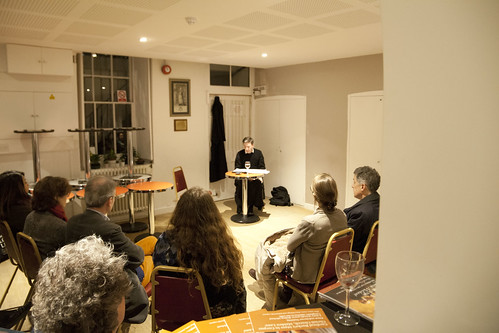 |
| Fr Edward van den Burgh giving a talk. |







.jpg)

